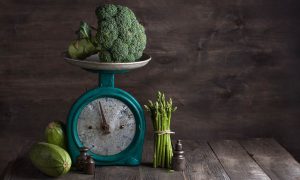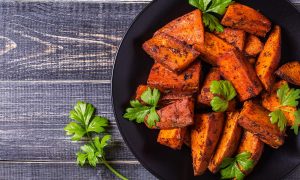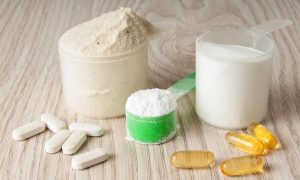Common Errors People Make When Counting Macros

|
|
Lately, macronutrient counting diets are all the rage, but exactly what are they, and what is meant by IIFYM? Well, IIFYM stands for If It Fits Your Macros and it is a diet protocol where people, rather than counting calories, will instead count macronutrients. A macronutrient, or macro, can be either a: fat, carbohydrate, or protein, and it basically refers to the amount of energy (calories) which come primarily from that particular food stuff. So, if you’re tracking protein macros, you would track the amount of calories you had consumed that day, purely from protein. You then apply the same principle to fats and carbohydrates, making sure to hit your daily target. If then, you’re aiming for 2500 calories, with 50% coming from protein, 30% from carbs, and 20% from fats, your aim would be to get 1250 (50%) calories from protein, 750 calories (30%) from carbs, and 500 calories (20%) from fats. We all track macros for different reasons, and can track them in different ratios, based upon our goals. For example, somebody looking to build muscle, would need more protein than somebody looking to slim down. There are very useful tools and calculators online for tracking your macros, and once you get the hang of it, tracking them is very simple. Despite this however, people still make a number of common, and very avoidable mistakes. Take a look below so you can see what we mean as we look at common errors people make when tracking their macros.
Using macro-counting as an excuse to eat junk

One of the main selling points of IIFYM diet protocols, was the fact that, if people were meticulous and careful, they could basically lose weight or reach their fitness targets, and eat junk in the process. People sometimes call it ‘flexible dieting’ and whilst it is true that, if you track your macros carefully, you could enjoy a cheeseburger for lunch and still lose weight, that does not mean every item that passes your lips should be unhealthy. We don’t just track macros to lose weight, we also do so for health reasons too. If you’re using it as an excuse to eat junk food, rather than wholesome, healthy, nutrient-rich food, your health will suffer. You can enjoy the odd treat here and there, and not break your diet/progress, but you must ensure that, 90% of the time, your macros are coming to you from fresh, healthy, wholesome foods.
Failing to weigh food beforehand
Flexible dieting is not for the impatient, nor does it leave any room for error. You aren’t just counting calories this time, you are also counting macronutrients, so you must know exactly how much of each food item you are consuming, before you prepare it. With chicken breast for example, don’t just guess what each breast weighs, actually get the breast and weigh it on digital scales beforehand. Do this every time because each time the serving may be slightly different, no matter how similar it may look. Always weigh your food beforehand, no matter how great at guessing you may be. It’s also important that you weigh the food after it has been cooked, in the case of dried food. Take rice or pasta for example. When dried, serving sizes can look tiny and will weigh much less than cooked. Once they’ve absorbed all of the water and have swollen in size however, the weight will have increased, so if you are going with the dried weight value, you will almost certainly have taken in more carbohydrates than you realized.
Thinking of all food items as one macro
Let’s face it, when we think of meat we think of protein, when we think of bread we think of carbs, and when we think of oil we think of fat. However, when counting macronutrients, this will not do. Of course each food item will have a major key nutrient, but you also have to account for other macros that may be hidden in the foods. If for example, you went with sausages, they would be rich in pork meat, but they may also contain carbohydrates, as some of them have added bread.
Failing to log that milk and half tsp of sugar you had in your coffee

When tracking macros, a lot of the time, people will fail to log portions which they deem to very insignificant, as in their minds, the small sizes won’t be able to make any difference at all. However, they do, and people don’t realize this. If you enjoy the odd cup of tea or coffee during the day, make sure you account for that splash of milk and half teaspoon of sugar you throw in there, because it all counts and it all adds up.
Failing to alter macros in accordance with activity
Another common mistake that people make when logging their macros, is failing to adjust them in line with their physical exercise and exertion, and this can hurt them in a big way. One of the most vital things to remember when counting macros, is to adjust them in accordance with how active you are. For example, on training days your carbohydrate levels will need to increase, whereas on off-days, fat and protein intakes should be slightly higher.
Not getting enough healthy fats
When tracking macros, it doesn’t matter whether you’re aiming for 10, 15, 20, or even 30% of your calories from fats, the thing to remember is that, primarily, the fats you consume should be healthy. We’ve spoke about how important it is to not use it as an excuse to eat junk, but even if you are getting plenty of fruits and vegetables inside you each day, you still need healthy fats to function properly. Fats should come from foods such as oily fish, whole organic eggs, avocado, nuts, seeds, healthy oils, grass-fed butter, and so on. The odd slice of cheese here and there is fine, but make sure you are getting enough omega-enriched healthy fats inside you to make up the majority of your fat requirements.














